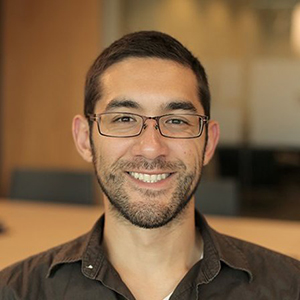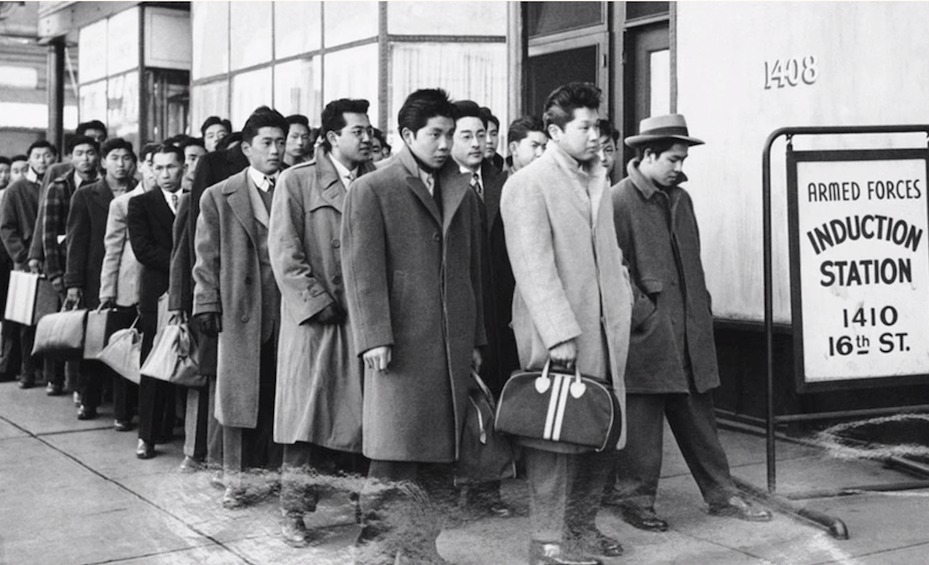“Now, more than ever, we need to know our country’s history,” Wilkerson, 55, wrote after the presidential election. “Our current divisions are neither new nor surprising and persist because we do not truly know and have not reckoned with what has gone before us.”
Month: January 2017
Karen R. Long contributed to the reporting.
Every evening in her four-story Brooklyn townhouse, author Jacqueline Woodson and her partner gather their family around for a meal and a ritual: Each person shares one act of kindness they’ve given that day — and one way kindness found its way back to them.
Celebrated for Brown Girl Dreaming and Another Brooklyn, Woodson, 53, writes literature with family at its core. Each Kindness, her 2012 picture book, considers two schoolgirls and a missed chance at friendship. “How does one walk through this world and be kind without even giving it a second thought?” Woodson said she wondered as she wrote the work.
With wit and warmth and a bit of edge, Woodson told a packed auditorium in Beachwood, Ohio, how she thinks on the page and in person about “identity, empathy and belonging.” Her hosts — Beachwood City Schools, Hawken School, Laurel School and the Cleveland office of Facing History and Ourselves — collaborated to prepare their students for Woodson’s visit. The educators want to foster empathy and belonging in “our divided country,” as Hawken’s headmaster Scott Looney put it.
In writing more than 30 books, Woodson said she said she works to quench young readers’ thirst for texts in which they can see themselves: “For a lot of people of color, we have had a long history of windows and very few mirrors. I wanted to grow up and fill that hole and. . .have it overflowing.”

Woodson recited from memory the opening pages of Brown Girl Dreaming that recount her birth in Columbus, Ohio. She grew up a voracious reader in South Carolina and New York City. She insisted that it was opportunity, not talent, that propelled her from her Bushwick neighborhood to win a National Book Award in 2014 and become the Young People’s Poet Laureate for the Poetry Foundation.
“You throw a stone [in Bushwick] — you’ll hit 25 Jacqueline Woodsons. It’s not like I’m some superstar. I was lucky,” she said. “But there were so many creative geniuses in my neighborhood — people who danced, who sang, people who should have been judges or at least really good lawyers.”
Joking that dyslexia had caused her to approach the stage in the wrong direction, Woodson highlighted her adaptive behaviors: “I am a very slow reader and a slow writer. I read everything out loud.” She said she wrote Brown Girl Dreaming in verse because that was how her memory works, and she primes it by reading poetry and listening to eclectic music, sampling Black Eyed Peas and Glen Campbell and Tupac all in one sitting.
She was also generous in citing other writers, quoting Audre Lorde, James Baldwin, Kwame Alexander and the documentary filmmaker Raoul Peck, whose new movie “I Am Not Your Negro” releases February 3. And she is an enthusiast for family viewing of “Black-ish,” a television series she named the best of 2016 for the New York Times. (The Woodson clan chaffs as it waits a day after it originally airs to catch it on their streaming service.) “We love it more than anything else that has ever been on television,” she wrote. But the real appeal is its role as a conversation starter.
“Every single day at our table, we’re talking about race. We’re talking about class…” Woodson said. “It’s important to be comfortable having those conversations around the dinner table.”

 by Matthew Hashiguchi, documentary filmmaker
by Matthew Hashiguchi, documentary filmmaker
Over the past year, I’ve been asked many times about the correlation between Japanese Americans and Muslim Americans.
I recently completed a documentary film, Good Luck Soup, which chronicles my family’s experience in the decades after the World War II Internment Camps. Many suggest that the Japanese American experience of the 1940s mirrors the Muslim American experience of today. While there are similarities, the starkest isn’t between Muslims and Japanese Americans, rather, it’s between the American public of the 40s and today. Both periods used fear to rationalize crude, racist and hateful gut reactions towards people who are not considered “American” because of how they look, pray and culturally associate.
After the Berlin attack, President-elect Donald Trump said, “All along, I’ve been proven to be right. 100 percent correct.” Asked about a ban on Muslims or a registry, Trump responded, “You know my plans.”
While these references are alarming, I don’t believe our nation would allow it to happen. What I do fear is the ease with which many have degraded, isolated and vilified an entire religion (1.6 billion Muslims in the world, of which 3.3 million live in the United States) on social media, national television, in print publications and within private conversations. Hateful rhetoric can mutate into something far more putrid than a registry or political action. It can become a belief.
Clearly, there is a current threat from terrorists and maniacs claiming allegiance to ISIS, just as there was a threat from the Japanese, Germans and Italian armies during World War II. But, one shouldn’t need to be Japanese American, or Muslim American, to know the dangers of labeling and stereotyping an entire race, ethnicity or religion. At one time or another, Irish, Italian, Jewish, Polish or Puerto Rican people (just to name a few) have all been blanketed with harmful misconceptions. We may not all know the sting of prejudice, but at the very least, we should all be able to understand that someone in our family tree was disliked because of their heritage, and not their actions. We should all be mindful of where our families come from and prevent our histories from dissipating with time.
Unfortunately, racism does not die easily. It festers and is passed down more like an inherited illness, from parent to child and then to grandchild, and continues to foment hatred and disdain through each generation. I know this because my family has seen it. In 1942, my grandparents were incarcerated in internment camps because they were Japanese. After they relocated to Cleveland, Ohio, they were called Japs and gooks as they assimilated into a predominantly black and white region. In the 1970s, my father was called a chink for eating at a restaurant within a certain Cleveland neighborhood. And in the 1990s, my siblings and I were called Japs, chinks and gooks, on a regular basis, while growing up in an east-side suburb of Cleveland.

The collective experiences of these three generations taught me that racism is learned and passed down from parent to child. Fifty years from now, will young Muslim Americans growing up in Chicago, Cleveland or Miami hear the same stereotypes, slurs and accusations that their parents or grandparents hear today? Will they be told to “go back to your country,” and labeled as a terrorist? I hope not.
But, if we don’t learn to address war, race and terrorism with the levels of complexity that they deserve, our society will repeat the same ignorant acts. Unfortunately, the fear rippling through the American public today seems akin to the fear of the 1940s. Can the children and grandchildren of those who interned my grandparents do better?
Matthew Hashiguchi is an award winning documentary filmmaker and Assistant Professor in Multimedia Film & Production at Georgia Southern University whose work focuses on the diverse cultural, social and ethnic stories of American society. Matthew’s work has screened in film festivals throughout the world and has been featured in various outlets such as The New York Times, The Washington Post and Al Jazeera.
How does one structure a year in reading?
The New York Times published the answers of 47 writers and artists who reflected on the books they chose over the past year. Their responses create a fascinating skein of reading and thinking, and include essays from four Anisfield-Wolf Book Awards recipients. The entire conversation, which weaves from basketball hall-of-famer Kareem Abdul-Jabbar to filmmaker Ava DuVernay to former House speaker Newt Gingrich to author Maxine Hong Kingston, is enlivening, a hopeful way to face into a new year.
Praise for “The Underground Railroad,” the stupendous fall novel from Anisfield-Wolf winner Colson Whitehead, threads through these reflections. Salman Rushdie read it; so did the YA-writer John Green, Anne Tyler and Judd Apatow.
Maxine Hong Kingston, who won a 1978 Anisfield-Wolf prize for “The Woman Warrior,” came up with the longest and the widest-ranging list. She sampled Charles Darwin and Nora Ephron and Andrew Solomon’s “The Noonday Demon: An Atlas on Depression.” He won an Anisfield-Wolf prize for “Far from the Tree,” another landmark, luminous work of nonfiction.
Harvard University President Drew Gilpin Faust expended her entire essay praising “March,” the three-book graphic memoir by Congressman John Lewis recounting his formation in the crucible of Civil Rights. These books in turn are based on “Walking with the Wind,” Lewis’ classic accounting of his life, which won an Anisfield-Wolf award in 1999.
Another graphic work attracted the praise of Junot Diaz, who kicks off the New York Times compilation recommending “Ghetto Brother,” a history of a multiracial Bronx, drawn and created by Julian Voloy and Claudia Ahlering. Diaz, who won an Anisfield-Wolf for his novel “The Brief, Wondrous Life of Oscar Wao,” also highlighted another nonfiction title: Wesley Lowery’s “They Can’t Kill Us All.” Diaz writes that “Lowery more or less pulls the sheet off America” in a book subtitled “Ferguson, Baltimore and a New Era in America’s Racial Justice Movement.”
James McBride, whose 1997 memoir “The Color of Water” is still taught widely in universities, strikes a bluesy note in an essay that divides books “into categories like saxophone players.” He read “The Rise and Fall of the Third Reich,” and then — to shake off some of its disturbing currents – turned to the manuscript for “Two and Two,” a forthcoming memoir from Rafe Bartholomew. McBride highly recommends this portrait of New York’s oldest saloon.
Samantha Power, who won both a Pulitzer and an Anisfield-Wolf award for “A Problem of Hell,” read books last year that illuminated her work as the United States ambassador to the United Nations: Madeline Albright’s “Madame Secretary” and Clark Clifford’s “Counsel to the President.”
The list from Kareem Abdul-Jabbar was flavored by two Anisfield-Wolf winning authors: “The Warmth of Other Suns” by Isabel Wilkerson, and “Charcoal Joe,” the latest detective novel from Walter Mosley. The basketball legend also read poetry, specifically “Teaching My Mother How to Give Birth” by Warsan Shire, a Kenyan-born Somali poet. Meanwhile sublime novelist Colm Toibin read 2013 Anisfield-Wolf honoree “My Promised Land.” Toibin described Ari Shavit’s nonfiction work as giving him “an increased sense of the complexity of Israeli heritage.”
Back in the United States, filmmaker Jill Soloway thought about making a pilot as she read “You Can’t Touch My Hair” by Phoebe Robinson. And Jacqueline Woodson recently held up her copy on PBS’s “News Hour” as a galvanizing book from 2016.
However one navigates a year, it is bettered by the company of a good book. The selections in this compilation are a bracing place to start.